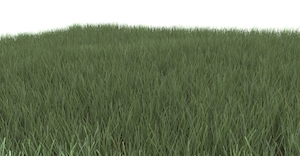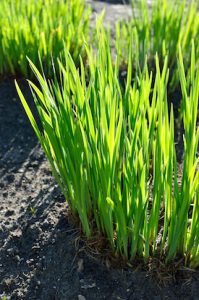Acworth Lawn Aeration Provides Greener Turf
Aerating Lawns In Acworth Georgia
Soil Compaction Relief From Aeration
Homeowners have a tendency to overlook problems related to soil compaction. Lack of fertilizer, improper water, nematodes, diseases and insects frequently are blamed for the decline of a lawn, when often compaction is the true culprit.
This problem begins when the soil’s top 4 inches becomes compressed. This impedes the movement of nutrients, water and air into the roots of the grass. The grass plants become stressed, which weakens their ability to compete with weeds. They also tend to recuperate from injury more slowly. Sooner or later you will need to renovate a compacted lawn.
Compacted Soil Suffocates Turf
Compacted soil is one of the contributors to thatch accumulating. This is due to the fact that highly compacted soil has restricted oxygen levels, which impairs activity of thatch-decomposing organisms such as earthworms.
Thatch Build Up
When thatch is not managed, it can lead to very serious pest and maintenance problems. Thatch tends to accumulate more quickly on heavy clay soils and compacted soils than it does on soils that are well-aerated. Therefore, in order to assist with thatch control, some lawns might need to be aerated frequently.
The solution to compacted soil is clear cut: aerify.
Lawn Frogs Landscaping core aeration service is the practice of removing cores from the soil and then leaving the cavities or holes in the lawn.
Core Aeration Benefits
- Aerating assist compacted soil is loosened and available nutrients and water are increased.
- Aeration also enhances thatch-decomposing organism activity, stimulating root growth and enhancing soil oxygen levels.
- Deep Core Aeration removes soil plugs, the tines or spoons sever stolons, rhizomes and roots as well. The process stimulates grass plants to produce new roots and shoots in order to “fill” the holes that are in the lawn. This increases the turf density.
- Water runoff is reduced when soil is loosened from Aeration.
- Core Aerating also improves the lawn’s overall health and increases its drought tolerance.
Timing Is Key To The Aeration Process
The kind of grass that you have will determine whether you should aerify in the summer or fall.
Aerating Cool Season Fescue Grass
Aerating lawns comprised of cool-season grasses like tall fescue and Kentucky bleugrass should be aerified during the fall, while there is less danger of weedy annuals invading and reduced heat stress as well. Allow for four weeks at least of good growing weather to give plants recovery time.
Warm Season Turf Aerating
 On the other hand, it is better to aerate warm-season grasses like Bermuda grass, St. Augustine grass, carpet grass, centipede grass and zoysia grass in the summer or late spring, while they are growing actively.
On the other hand, it is better to aerate warm-season grasses like Bermuda grass, St. Augustine grass, carpet grass, centipede grass and zoysia grass in the summer or late spring, while they are growing actively.
With either kind of grass, select a day with mild temperatures. The soil should also be moderately moist, since this will make it easier to penetrate the soil.
Aerating When It Is Too Wet Can Be Messy
Do not try to aerify a wet soil, since this is quite messy and can also compact the soil even further. If a core sample sticks to the probe, or the soil is sticking to your shoes, then you need to wait for the soil to dry out some before you start aerifying.
How Often You Should Aerate Your Lawn
Aerifying a home lawn can correct many soil problems, however it doesn’t tend to be a practice that is routinely performed. So how often should you aerify? As often as your soil needs it. To determine whether or not aeration is necessary, take a tour of your lawn. Use a screwdriver to probe the soil.
If your screwdriver is able to penetrate the soil without a lot of resistance, then it probably isn’t necessary for you to aerify. However, if it is hard to penetrate the soil using your screwdriver, then it might be time to aerify your lawn. When testing, be sure that the soil is moist since it can be harder to penetrate dry soil.
High Traffic Areas Need Aerated More Often
You might need to aerify turfgrass that is in high traffic areas more frequently than the other parts of the lawn. You also might need to aerify turfgrasses more often that have low traffic tolerance like St. Augustine grass and centipede grass, compared to turfgrasses like zoysia grass and Bermuda grass which have good traffic tolerance. Usually high traffic areas can be done by “hand.” This method is described below.
Aerating Small Grass Areas
The aerification process isn’t expensive. The cheapest and easiest method for aerifying a small lawn is to use a spading fork. To aerate the lawn, push the tines of the spading fork as far into the soil as you can (4 inches at least) then rock the fork so that the holes are enlarged.
The back and forth movement will help to loosen the soil up and make more space for new grass roots. One drawback to using a spading for aeration is as you are making a hole, you’re forcing soil particles closer together around the hole as well. This causes more compaction. It is also a very labor-intensive method when you have a large area to aerate.
The Recommended Way To Aerate
You can buy a sod-coring tool for a couple of dollars. It does a much better job. It is a tool that is easy to use and perfect for small areas. The sod-coring tool, unlike the fork, removes the soil cores from the lawn rather than pushing aside the soil when creating the holes. After each plunge the soil plugs get deposited onto the lawn. This is beneficial since microorganisms are contained in the plugs that help with decomposing any thatch layers that are in the lawn.
Large Area Aeration
You will need an aerifier or power-driven core aerator in order to aerify a larger lawn. You can rent an aerifier at a garden and lawn supply center. These machines have hollow tubes or spoon-shaped tines for their working parts.
Professional Lawn Aerating Services In Dallas Georgia
Often by the time you have gone to rent an aerator and do the actual work itself you can save time an money by letting our professional aeration techs come out and core aerate for you. Our lawn care maintenance crews have years of experience aerating and know how to get the job done resulting in greener, thicker turf for the growing season. Our highly trained Lawn Maintenance Crews will provide aeration services in Acworth and surrounding areas.
Core Aeration For Lawns
The hollow tubes get driven into your lawn and remove cores of soil from out of the ground to relieve compaction. These cores then get strewn over the lawn.
 A somewhat cleaner hole is made by the hollow tine compared to the spoon kind which doesn’t bring up as much soil. The size of the tines can vary up to 3/4 inch and penetrate as deep as 3 inches, which depends on what the manufacturer’s specifications are.
A somewhat cleaner hole is made by the hollow tine compared to the spoon kind which doesn’t bring up as much soil. The size of the tines can vary up to 3/4 inch and penetrate as deep as 3 inches, which depends on what the manufacturer’s specifications are.
Tines that are placed closer together remove more soil, alleviate compaction more quickly and expose a large area of soil surface for fertilizer and water movement compared to tines that are spaced wider apart.
Penetration depth will depend on the power and weight of the aerifier, tine diameter, soil moisture and soil type.
You should leave the soil cores out on the lawn for traffic and rainfall to break up. If you are bothered by their appearance, you can rake them into your grass to speed their disappearance up, but the remaining plugs will break down and provide nutrients to the lawn in the next couple of weeks.
Lawn Frogs Landscaping recommends double pass core aeration. For best results, we go in one direction and then go in a perpendicular direction.
Reseeding and Aerifying
Lawn Frogs Landscaping recommends combining seeding with aerification, especially on bare or sparse areas. If you are planning on seeding your lawn, make 6 to 10 passes with your machine over the lawn. A number of holes will need to be produced that are 4 inches apart at least.
Aerating and Over seeding will improve the density and appearance of the turf.
Contact Us today to learn more about aeration and increasing the health and appearance of your lawn.
